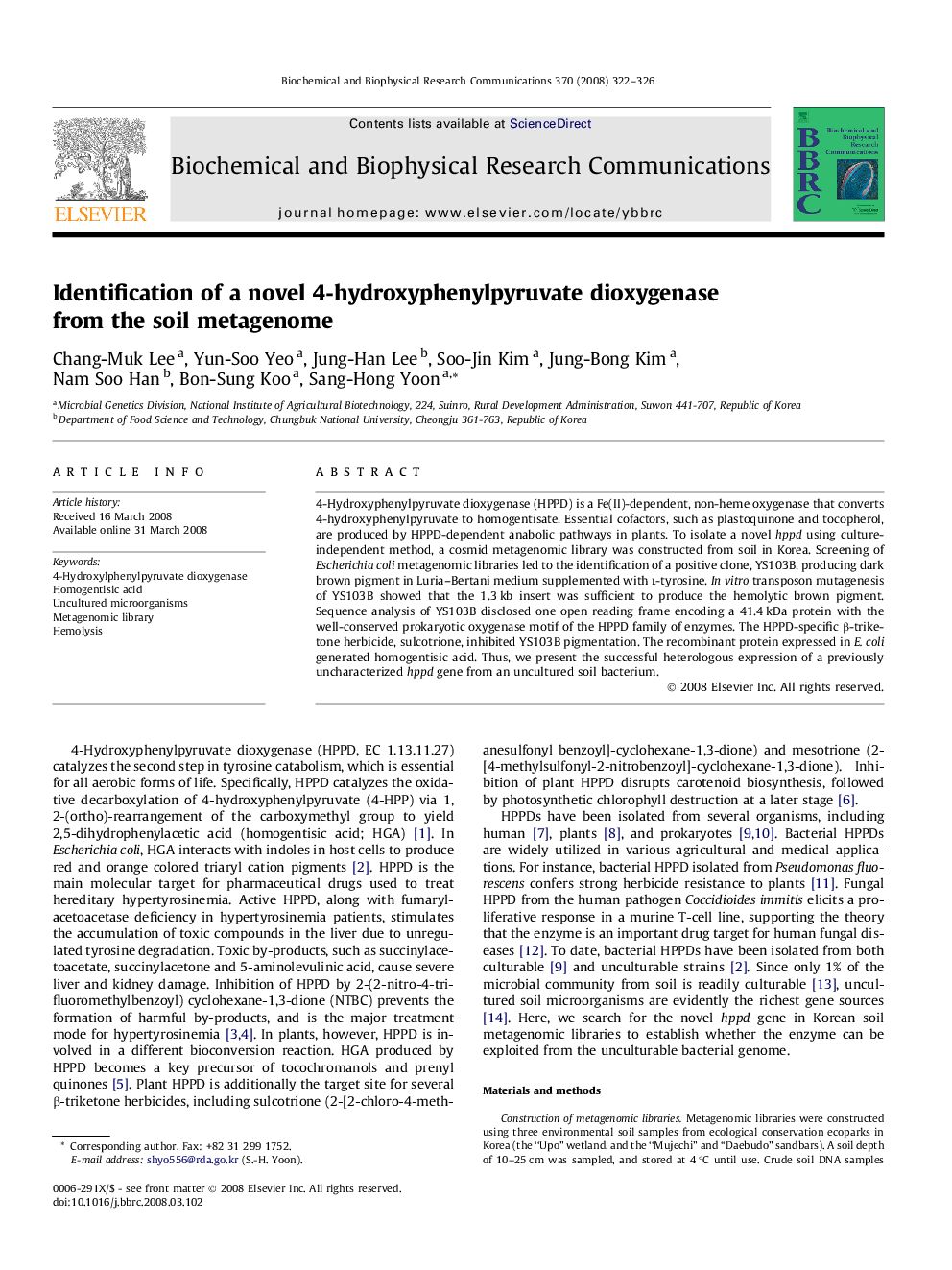| Article ID | Journal | Published Year | Pages | File Type |
|---|---|---|---|---|
| 1935772 | Biochemical and Biophysical Research Communications | 2008 | 5 Pages |
4-Hydroxyphenylpyruvate dioxygenase (HPPD) is a Fe(II)-dependent, non-heme oxygenase that converts 4-hydroxyphenylpyruvate to homogentisate. Essential cofactors, such as plastoquinone and tocopherol, are produced by HPPD-dependent anabolic pathways in plants. To isolate a novel hppd using culture-independent method, a cosmid metagenomic library was constructed from soil in Korea. Screening of Escherichia coli metagenomic libraries led to the identification of a positive clone, YS103B, producing dark brown pigment in Luria–Bertani medium supplemented with l-tyrosine. In vitro transposon mutagenesis of YS103B showed that the 1.3 kb insert was sufficient to produce the hemolytic brown pigment. Sequence analysis of YS103B disclosed one open reading frame encoding a 41.4 kDa protein with the well-conserved prokaryotic oxygenase motif of the HPPD family of enzymes. The HPPD-specific β-triketone herbicide, sulcotrione, inhibited YS103B pigmentation. The recombinant protein expressed in E. coli generated homogentisic acid. Thus, we present the successful heterologous expression of a previously uncharacterized hppd gene from an uncultured soil bacterium.
